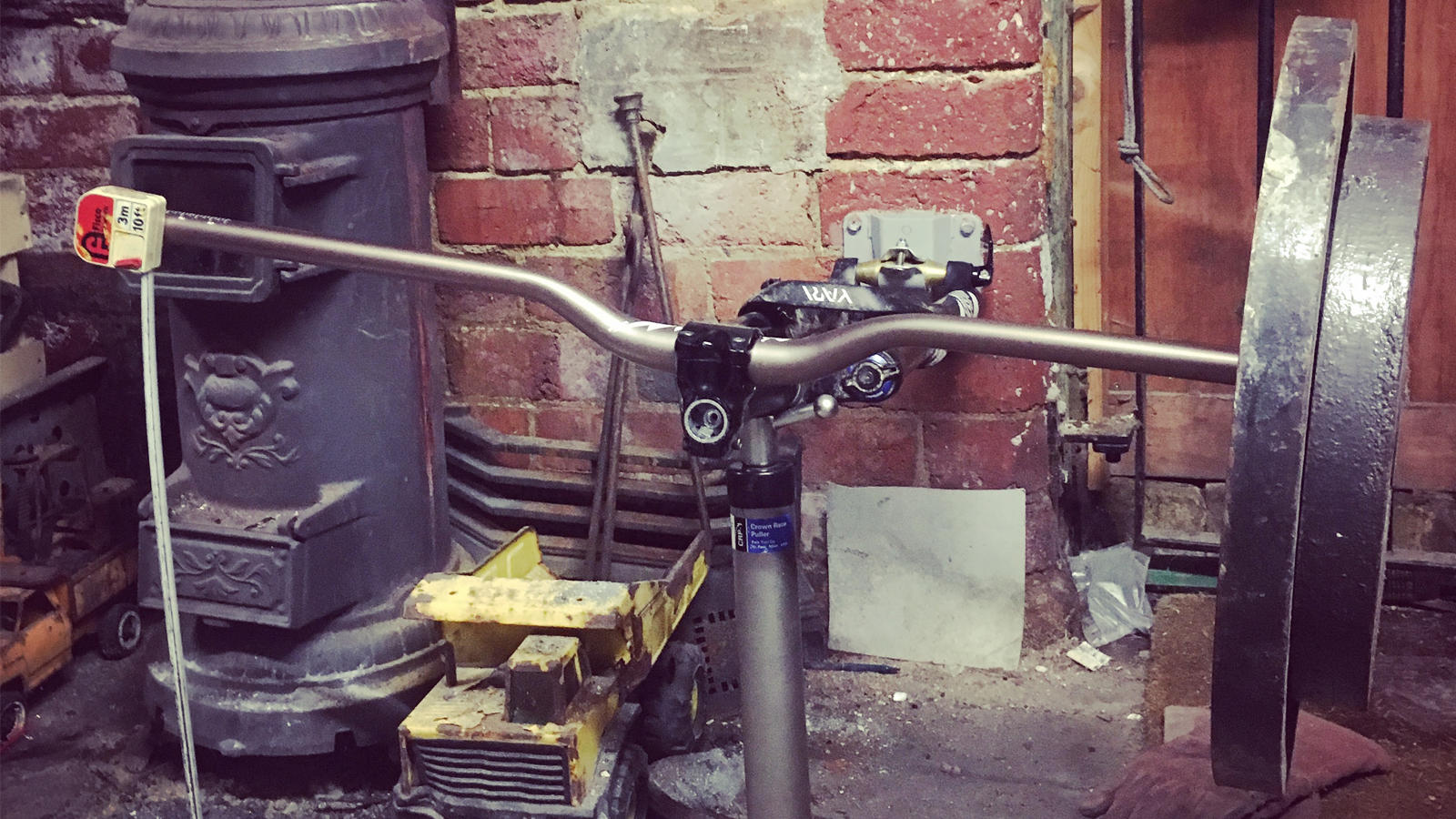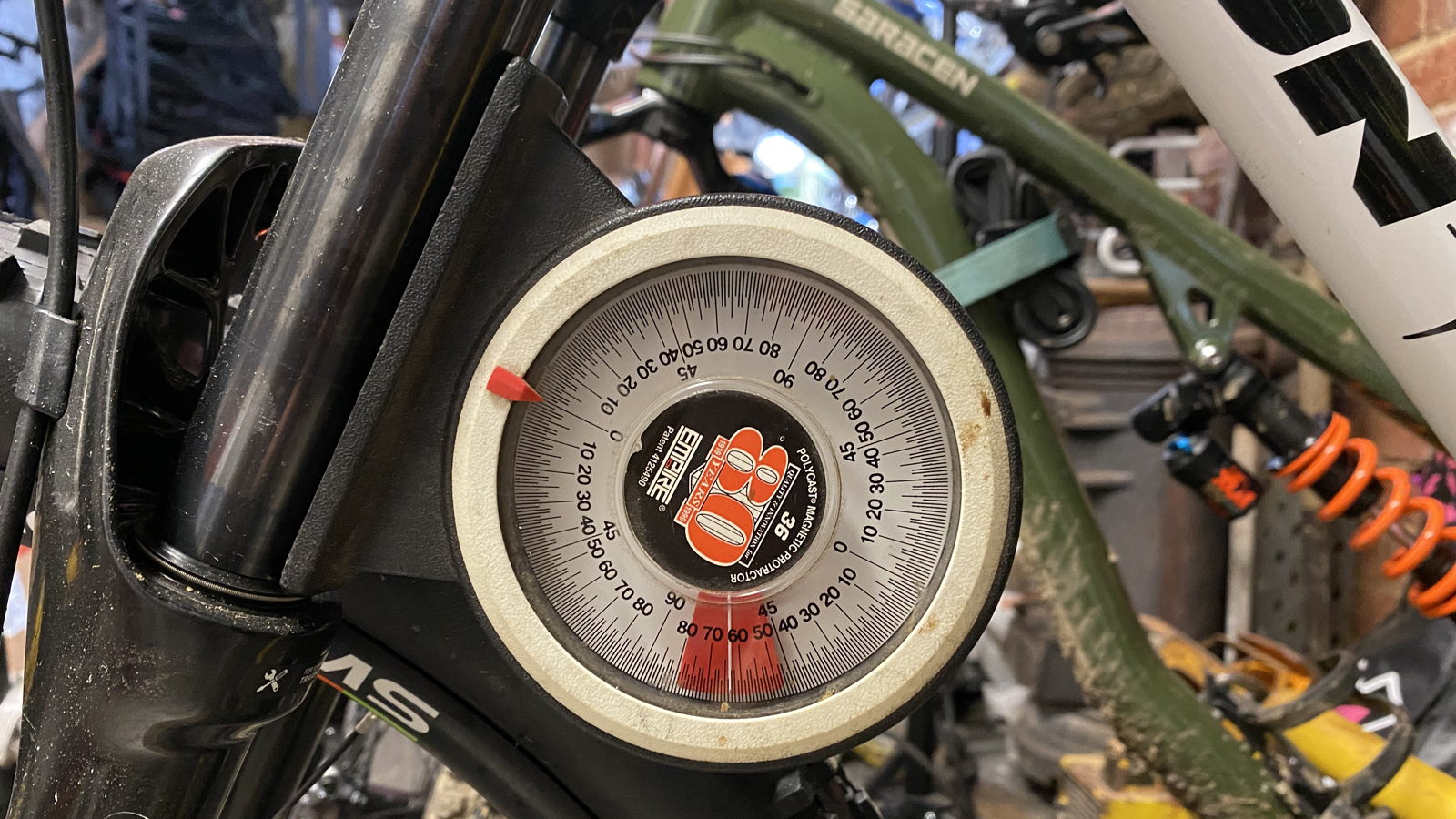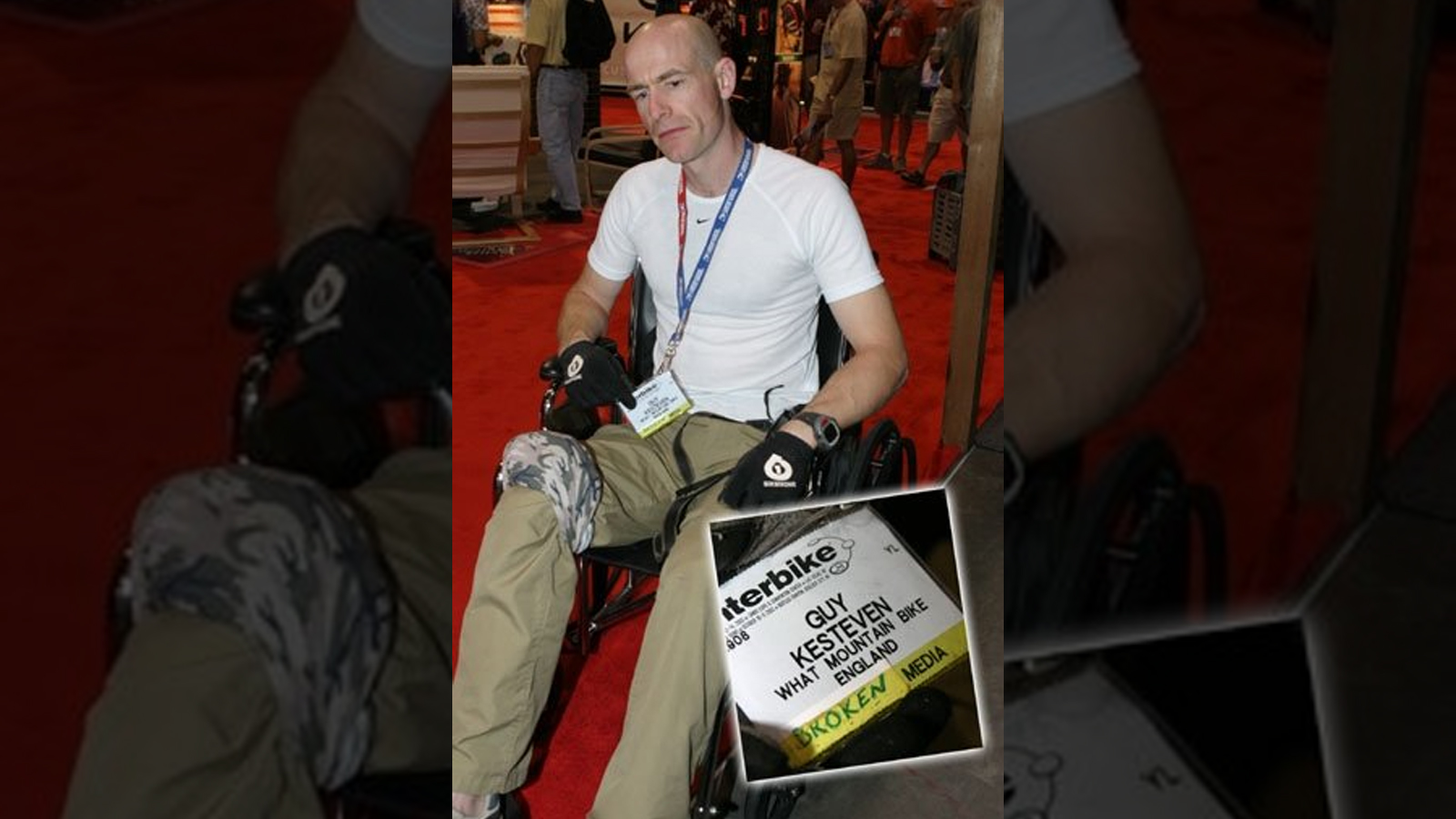Bespoken Word: The maths of bike testing
Is bike testing just a numbers game? Guy Kesteven has been doing the hard sums of off-road algebra for decades to dial in the algorithm of the ultimate ride

I once did a presentation to my daughter’s primary school about the maths of mountain biking as part of a project they were doing on ‘Jobs that involve sums’. It was inspired by the segment in the Collective DVD where they superimposed the angles and predicted trajectory arithmetic of a jump line onto the footage, but I added some basic bike dimensions into the mix, too.
All they actually really wanted to know was A: “What was the most expensive bike I’d tested. B: What was my worst ever crash? And C: What happens if you need a poo when you’re riding?” (answers at the bottom). So maybe the maths was lost but even my consistently critical daughter (it’s hereditary) conceded it was a lot more interesting than the kids who dragged in ‘accountant dad’.
The art of deduction
It did really switch me on to the idea of how much of bike testing is basically an algorithm and that was reinforced more clearly - but possibly more catastrophically for my global MTB career - when I had an informal online ‘chat’ with the new editor of a large rose-tinted, Canada-based mountain bike website. The number of bikes I tested (this was back in the magazine days when I was racking up hundreds of different ride assessments a year) was clearly a source of suspicion, but I pointed out that it only took a few days at most to go through most new bikes as they weren’t actually ‘new’. That’s because if you are testing enough bikes and gear to hit a literal ‘critical mass’ then the performance of every Maxxis, WTB or Schwalbe etc. tire type, on every different DT Swiss or WTB etc. rim/wheel at different pressures on different sections of trail is completely hardwired into your considerations. So are the performance characteristics and/or peculiarities of the appropriate SRAM or Shimano groupset or whatever mash-up is in play.
If you’re doing ‘best-of group tests’ on a regular basis then you’re dialed in on all the brakes and forks and how they sit in the wider context of the current stopper/suspension landscape and you should be able to tell that something has been custom changed from stock even before you ask the design team. I’ve got Excel spreadsheets of spec stretching back years so I can double-check if a particular piece is genuinely light or just assumed to be because it’s carbon, or how much that bar, at that width, with that stem is likely to flex. Add in a hyena pack of pals who I throw all the test kit I get to for a miserable death by relentless riding and I can add in a fair estimate of how long things will last and whether that new feature is very clever or just asking for trouble.

The components are all superimposed on the underlying bike geometry arithmetic, too. The multi-part maths of what happens to steering feel when that bar sweep and width, combined with that stem length is bolted onto that fork offset running at that head angle that far from the bottom bracket/seat/ground/back wheel. And then there’s obviously the kinematics (just a posh word for the interrelation of pivot points in space) of why a bike feels like that through the pedals or when the back wheel hits a flat-faced slap or get crushed by the Gs of hard cornering.
And to be honest it’s not so much knowing how all those different combinations should feel but having the experience and insight to tell when they don’t feel like they should. And that’s where things get really exciting and interesting. Drilling down into the details by riding and re-riding the sections that really highlight the anomalies in the algorithm. Adjusting, swapping, giving other riders a go until you’ve worked out the crucial aspects of this new equation and added them to the bike-maths-harddrive humming away in your helmet.
Plus, if you’re testing enough bikes to do the job properly then you’ll have tested the previous model and all its competitors already. Not just informing/short-cutting your appraisal but putting it into current context so the review is actually useful for buyers. I’ve also been lucky that I’ve ridden and tested through decades of gradual change and development so each technology or geometry tweak - extreme or evolutionary - has had time to be learnt and sink in, not suddenly been dumped on me like a nan who's been dropped into Blood Trail VR after smashing a four-pack of Monster Ultra Red.
Algebraic bike ride
So to bring it back to the original story, when the editor in question shared a picture of a Mondraker Dune and incredulously said something like ‘how can you test this in a handful of days?’ I replied that the only thing I would actually be testing was the performance of a slightly changed shock set-up and a wider Boost back end compared to the previous year’s Dune that I’d reviewed a couple of months previously and had a big chat with the designer about the bike's shock tune. That clearly made me sound more like a massive prick than a must-have employee (which is a fair assessment) but, as in most instances, the basic maths doesn't lie.
However, while you can bring every aspect of a bike’s character - from fractional geometry to oil speed through a valve or flex vectors in a tube - down to an algebraic equation (even paint has a Pantone) and predict how it will feel on the trail that’s just as exciting as higher maths sounds to most of us. Perhaps unsurprisingly the bikes that are closest to what is currently considered the perfect numbers for a given purpose often turn out to be so flawlessly predictable that they’re actually quite dull to ride. So if that’s the ‘maths of bikes’, what’s the ‘art of bikes’ that lets me wax lyrical about their individual personality and charisma and makes them something you fall in love with emotionally not just as an engineering equation? Well for once I’m going to stop where I meant to and deal with all those questions and thoughts next week, so be sure to check in again then.

And in case you’re wondering:
A: At the time of writing, the Santa Cruz Bullit.
B: The one where I split my leg vertically through the center of my knee joint and displaced a large section of my shin in a crash at the Interbike Outdoor Demo in Las Vegas. Because I could still wobble along on the remaining bit of knee and nothing screamed when you prodded it though, I just took plenty of Advil, ‘borrowed’ a wheelchair from a casino and ‘cracked on’ with the indoor trade show for four days.
And C: Dig a hole with a stick well away from the trail, wipe with leaves and cover it all up carefully.

Guy Kesteven has been working on Bike Perfect since its launch in 2019. He started writing and testing for bike mags in 1996. Since then he’s written several million words about several thousand test bikes and a ridiculous amount of riding gear. He’s also penned a handful of bike-related books and he reviews MTBs over on YouTube.
Current rides: Cervelo ZFS-5, Specialized Chisel, custom Nicolai enduro tandem, Landescape/Swallow custom gravel tandem
Height: 180cm
Weight: 69kg
